No matter how I arranged things, it looked like I would have a lot of time on public transportation on the second day of my Okinawa holiday. I really wanted to see several different things that would give me a cross-section of the history and culture, and the things I was interested in were on opposite sides of Naha. So I picked up a Naha public transportation day pass that was good for both the bus and the monorail, and was pleased to find out how frequently they both ran. It did not take me nearly as long to get places as I thought it would.
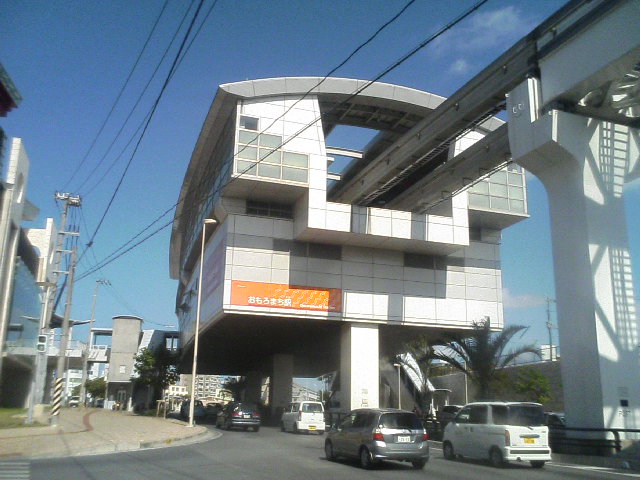
Yui rail Omoromachi Station in Naha (photo: wikipedia.org)
I started out taking the monorail from the JAL City Hotel to the Omoromachi Station (おもろまち駅, Omoromachi-eki) and walking to the Okinawa Prefectural Museum and Art Museum (沖縄県立博物館・美術館 , Okinawa Kenritsu Hakubutsukan Bijutsukan) in time for it to open. The building was massive, made from white limestone and glass.
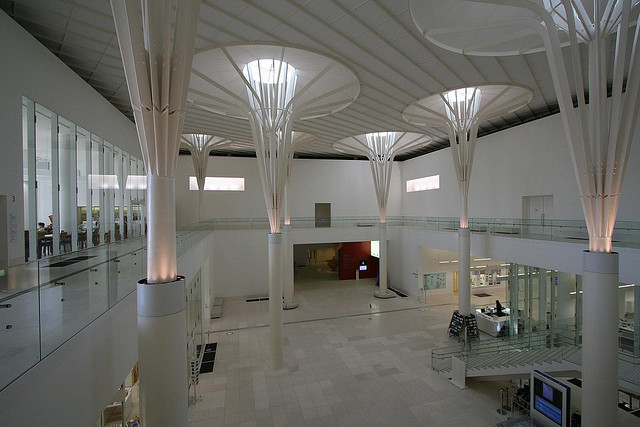
Okinawa Prefectural Museum and Art Museum inside (photo: l-v-l/flickr)
It was quite beautiful and airy. The displays inside were fascinating. I knew I would not have time for everything on my agenda, so with a pang of regret skipped the art museum, but was thus able to spend longer in the natural history and history sections. I did not tape this but a nice walk-through of the museum follows, it is in Japanese but you can get the idea.
The displays were laid out very clearly and logically, so it was easy to follow the time progression. The models and artifacts made it easier to understand what life might have been like, from the distant past to the Ryukyu Kingdom. The displays ended with the US occupation, but then I was able to go to other sections which had interactive exhibits and more detail about specific times.
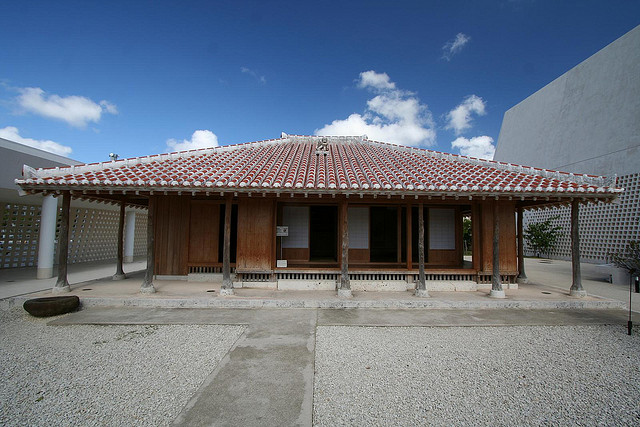
Okinawa Prefectural Museum and Art Museum traditional house (photo: l-v-l/flickr)
Outside the building was a garden framed with the white limestone. I think this might have been my favorite part, enjoying the sunshine and seeing a replica of a Ryukyu house built in traditional Okinawan vernacular fashion which was suitable for high-temperate, high-humidity climates.
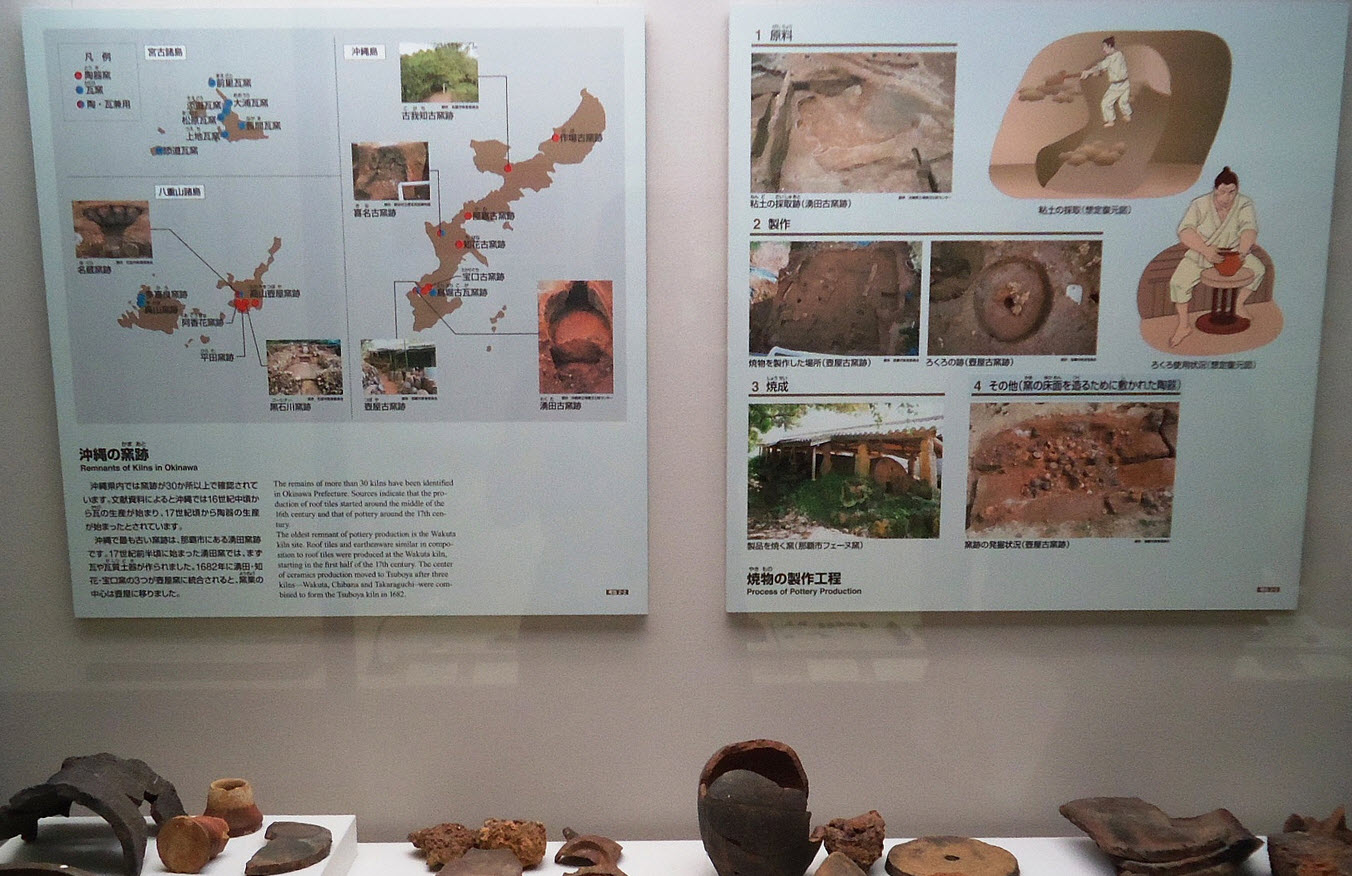
Okinawa Prefectural Museum pottery display
I wondered what it would be like to live in such a place, and compared it to my hectic work and small apartment at home.
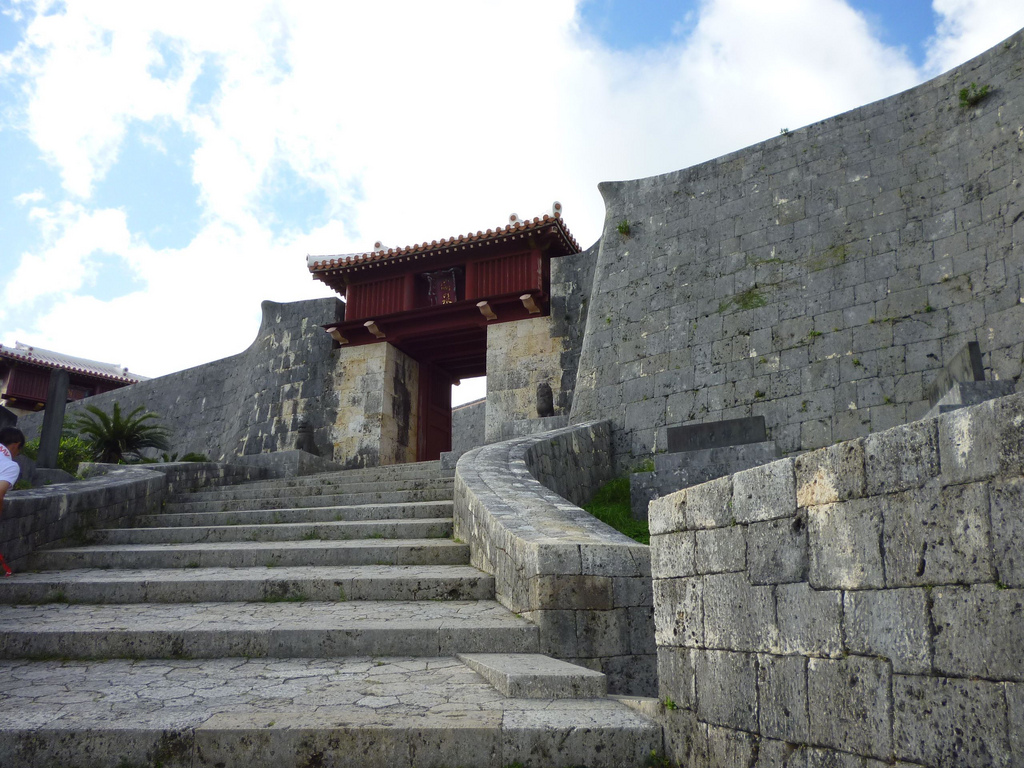
Shuri Castle, Naha
When I had my fill of the museum, I hopped the monorail to the other end of the line. Even though a few other places were closer on the map, Shuri Castle was easier to get to. And I was surprised to find that my destination was not just a castle, but a fairly extensive park.
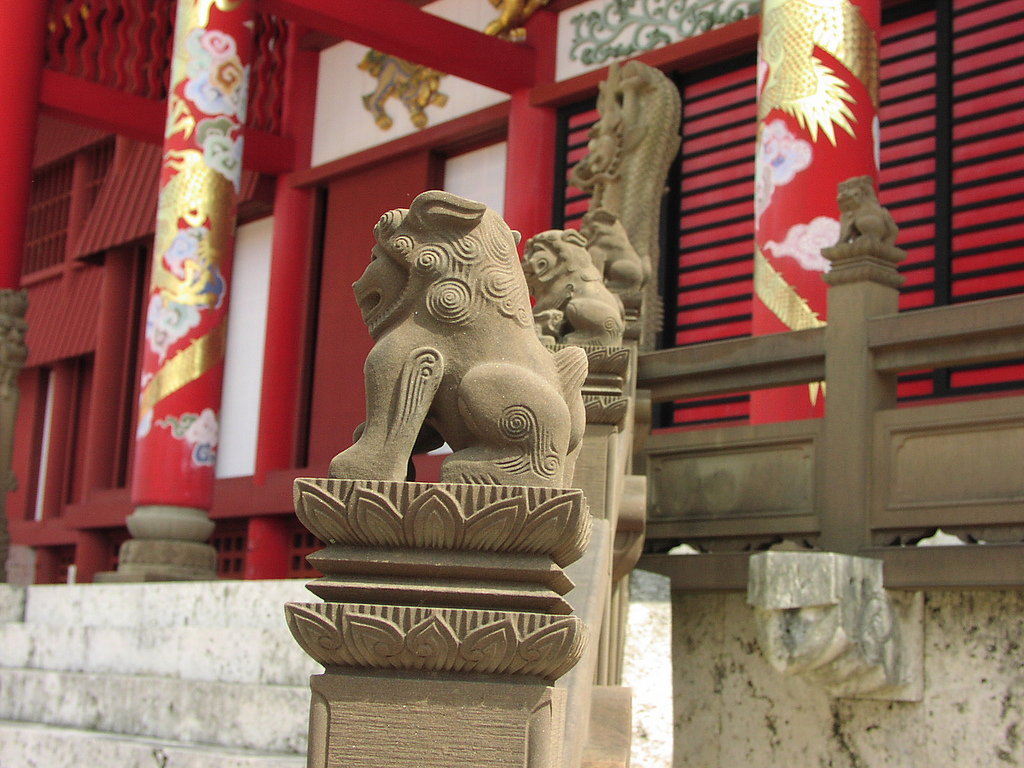
Shisa@Shuri Castle
There were many walled areas and some really lovely gates. Not like the heavy, dark wood ones I associate with Japan, but graceful red lacquered turrets surmounting the walls. They made me think of Chinese architecture, but were even a little different than that. I got the combination ticket to enter the buildings, and it was worth every yen. The buildings were elaborate. They had several stories with audience halls and chambers of varying sizes. It seemed like every inch was adorned with dragons and peonies, beautiful carvings and painting. The colors were bright to the point of garish, but were chosen so they balanced surprisingly well. It was festive and vivid, full of energy.
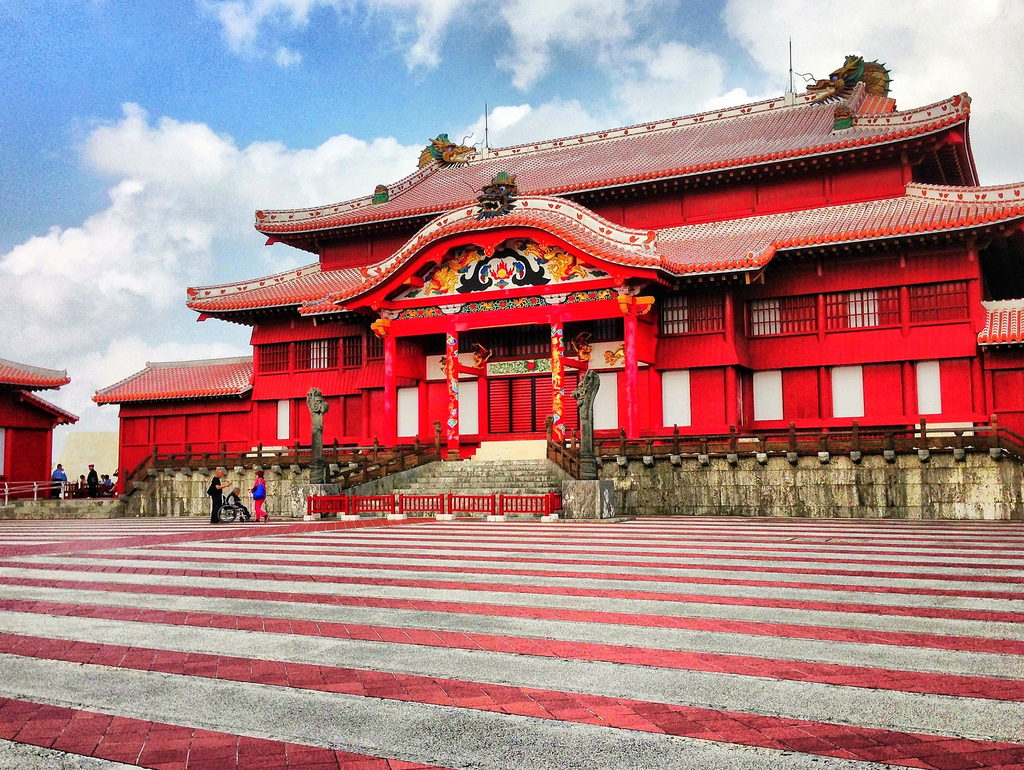
Shuri Castle
I was particularly drawn to the second floor of the Seiden, or building used for formal events. The second floor was the domain of the queen, where she would perform various ritual functions and meet with guests. I guess it struck me in particular because I had just seen the humble, grass-roofed home of a commoner just a short time before. The contrast was extreme.
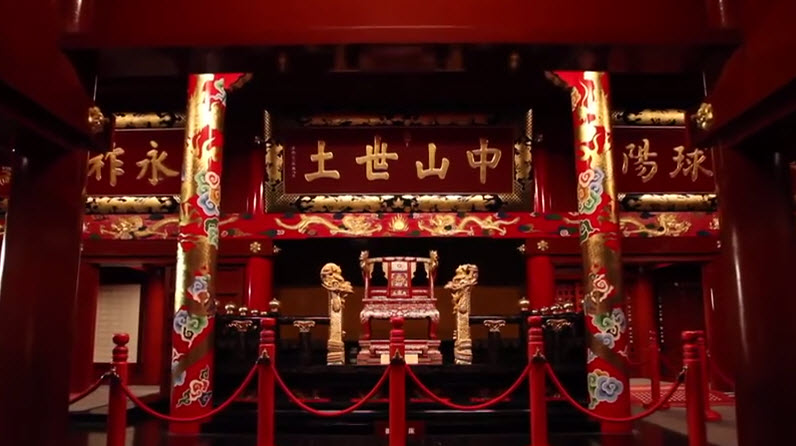
Shuri Castle Seiden Interior
My timing was auspicious because there was a performance of Okinawan dance in another area. It was similar to the performance at the Urashima Dinner Theater last night, but the dances and costumes were slightly different, and the setting made the experience richer. Last night in my hotel room I read the brochure from the theater about the dances, and I think that helped me appreciate them more this time.
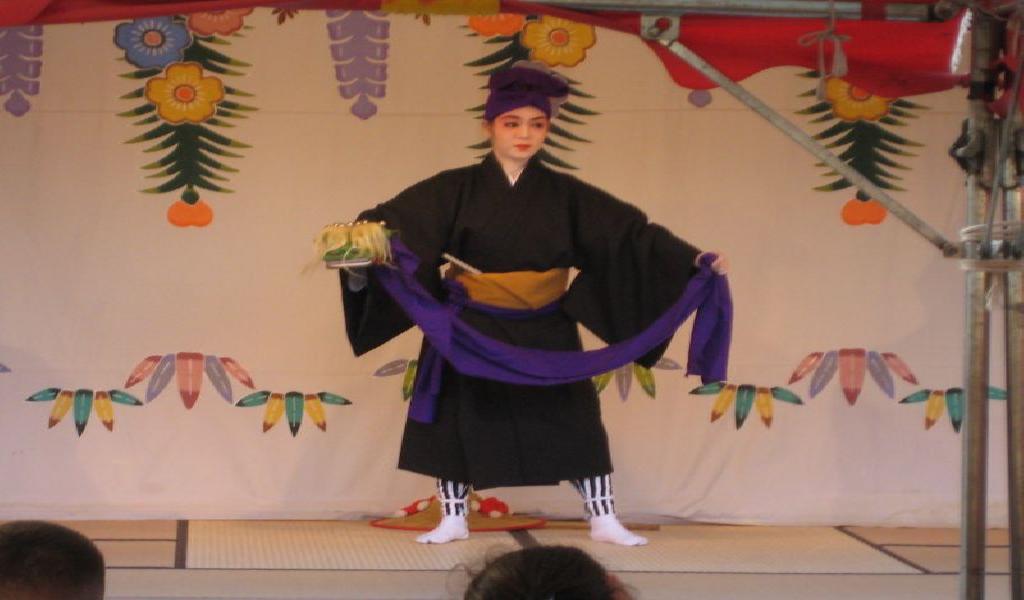
Shuri Castle Dancer
It was lovely strolling on the paths among the trees, it seemed like there was a new thing to look at around every corner. I even stopped at the rest house and had lunch there so I could explore the park longer. It was clear why this had been made a UNESCO World Heritage Site.
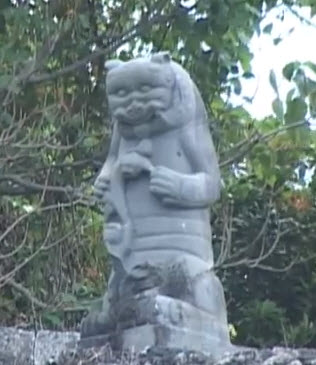
Shuri Castle park
A little removed from the main park area was another part of the UNESCO site, a mausoleum carved into the hillside itself, called Tamaudun. It was where the Ryukyu kings and queens and their families were entombed. The monument was imposing, like a stone castle flanked by the limestone walls. I wished I could go inside to see, but had to settle for the museum where I bought my ticket.
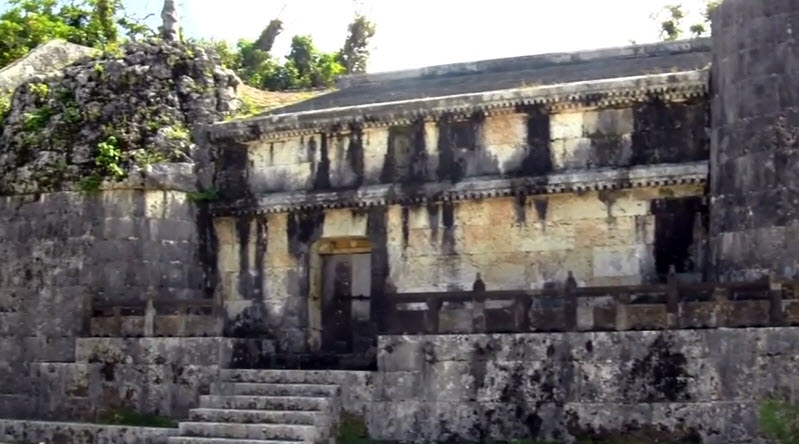
Tamaudun in Okinawa
There was a model of the interior, showing the three rooms where the bodies were ritually cleaned, and the chamber to the east for the kings and queens and the chamber to the west with the other remains. It was a bit sobering to see the photos from before WWII, knowing that this, as well as most of Naha, was destroyed and had to be rebuilt. The detail of the reconstruction effort was boggling to think about.

Tamaudun Shisa lions Okinawa
Like many other Naha sites, this one was watched over by the shisa lions. But these looked like they were laughing and having fun, which seemed an unusual choice for burial grounds. Though stylized, it was interesting that all the shisa seem to have personalities of their own. I wondered who decided on the style for a given location.
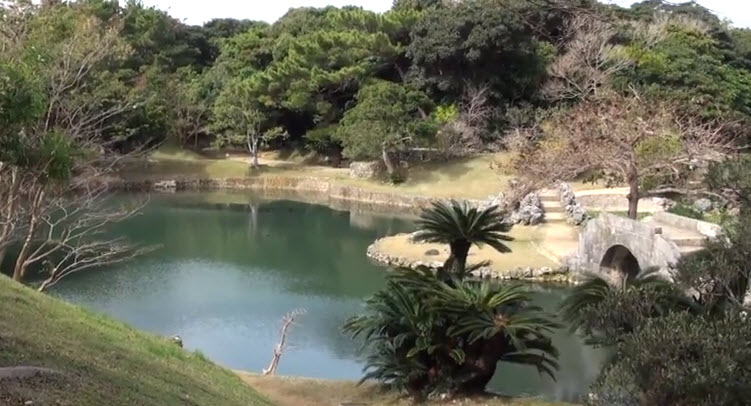
Tamaudun park area in Okinawa
After sitting for a while in contemplation of the beautiful, silent façade, I left Tamaudun for the other side of town. It turned out that the park I was going to was very close to Namanoue Beach, so I probably should have combined it with yesterday’s itinerary. Instead of walking like yesterday, I took the bus so I arrived quite close to Fukushu-en Garden.
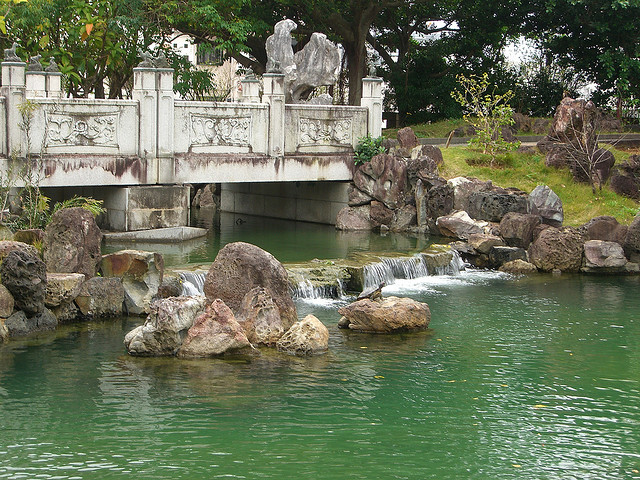
Fukushu-en Garden pond and turtle (photo: navisan/flickr)
I wanted to see it because Okinawa has strong ties with China, and it seemed fitting that I visit a place celebrating the association. It was also nice that the garden was free to enter. That was a surprise, because I have paid entrance fees at a lot of places that were smaller and less interesting that Fukushu-en. It looked like it had been there for centuries, with unusual rocks and a meandering lake. The plantings seemed impossibly lush and green. I loved the keyhole doors in the walls and the strolling path around the pond. It was hard to believe that it had been designed and constructed only a few years previously.

Fukushu-en Garden pavilian (photo navisan/flickr)
I felt like a child when I realized that there were caves under the huge rock that supported the waterfall. I ducked through the tunnels and listened to the water, reveling in the fact that no one from work was around to see me giggle and play. My frivolous spirits continued and I bought some food to give the turtles and koi in the lake. Visiting Fukushu-en garden was a pleasant and lighthearted diversion from the formal historical and cultural sites I had been. And maybe I needed it to relax and prepare for my last stop of the day.
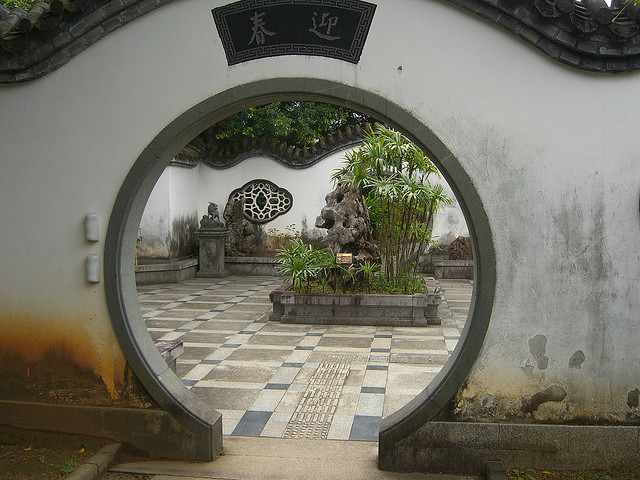
Fukushu-en Garden keyhole gate (photo: naviasan/flickr)
The former Japanese Navy Underground Headquarters (旧海軍司令部壕) are on a hill overlooking Naha. I caught another bus, followed by a fairly steep walk to get there. I am not particularly interested in military things, but it seemed only fitting that I include some reference to the terrible battles of WWII in my visit to Okinawa. It seemed like such a pivotal point that colors life in Naha even today.
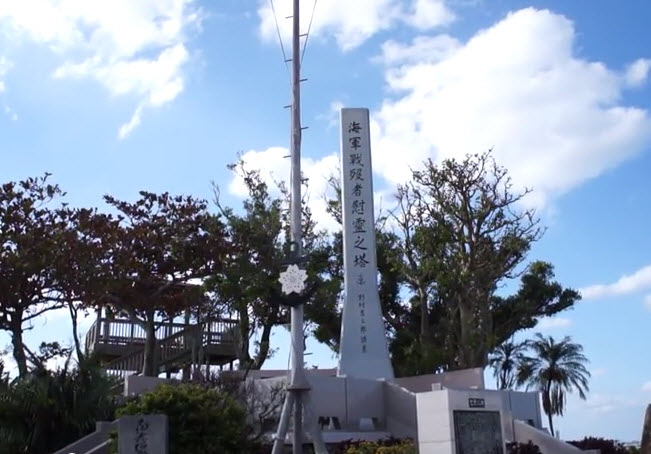
Former Japanese Navy Underground Headquarters
The Japanese navy used this headquarters until a fateful battle where the tides turned and the soldiers knew it was hopeless. Many committed suicide, others were killed by the US troops that overran the base. In all, over 4,000 were dead by the end of the battle. I braced myself for a grim journey, and entered the museum at the entrance. I was surprised at the amount of English on the labels, and looked wonderingly at the uniforms and weapons. I was morbidly drawn to some of the photographs. Then I went into the tunnels themselves.
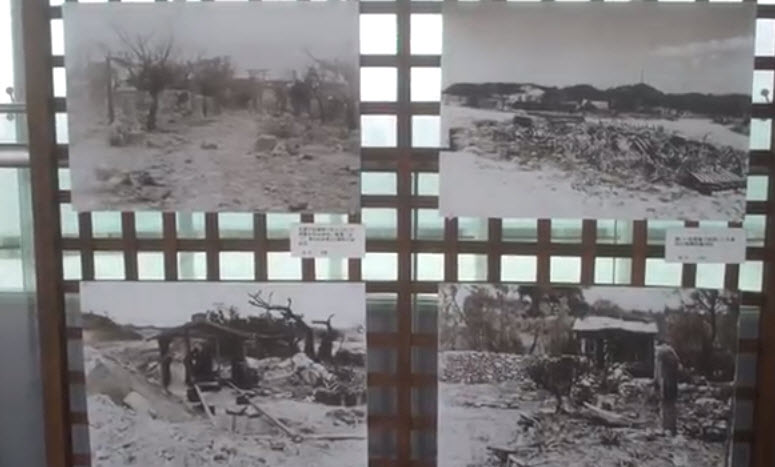
Japanese Navy Underground Headquarters history panels
They were low and cramped, I felt a momentary desire to flee to daylight and fresh air. But I walked through the halls carved by pickaxes, and stared into the rooms set up like they were when in operation. A command center, code center, rooms for things that I did not understand. The walls were still scarred with marks of bullets, shrapnel and grenades. I shuddered at what it must have felt like in those final hours. I could imagine the desperation and fear filling the air along with the sweat and smell of weapons.
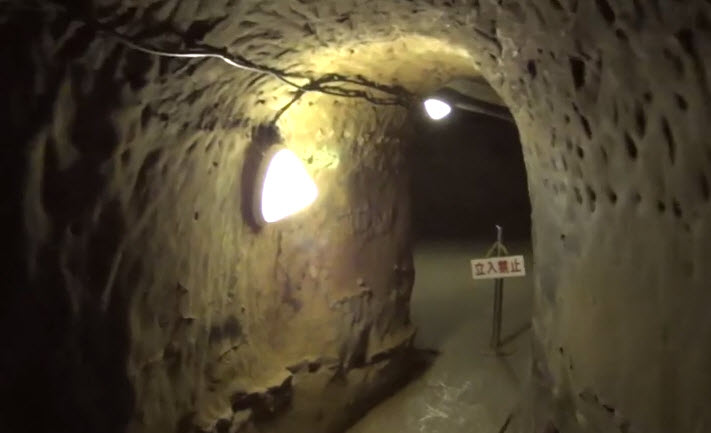
Former Japanese Navy Underground Headquarters tunnels
I was glad that I included a visit to the former Navy Underground Headquarters on my plan, but also glad to leave it. I have never had the chance to be close to war and death, and this was a grim reminder that I never want to be. Apparently it is open to the public now as a reminder of the past to encourage peace in the world. I, for one, was moved much more than I expected.
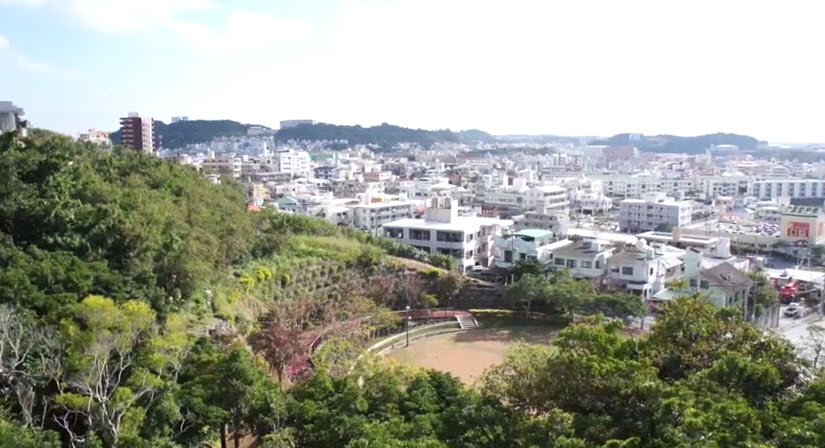
Former Japanese Navy Underground Headquarters view
Like I previously mentioned, the base is at the top of a hill. It actually had spectacular views of the surrounding area. It was fascinating to see Naha from above and look for landmarks to get my bearings of where I had been that day. It was also good to be outside in the breeze and evening air, thinking about the future rather than the past.
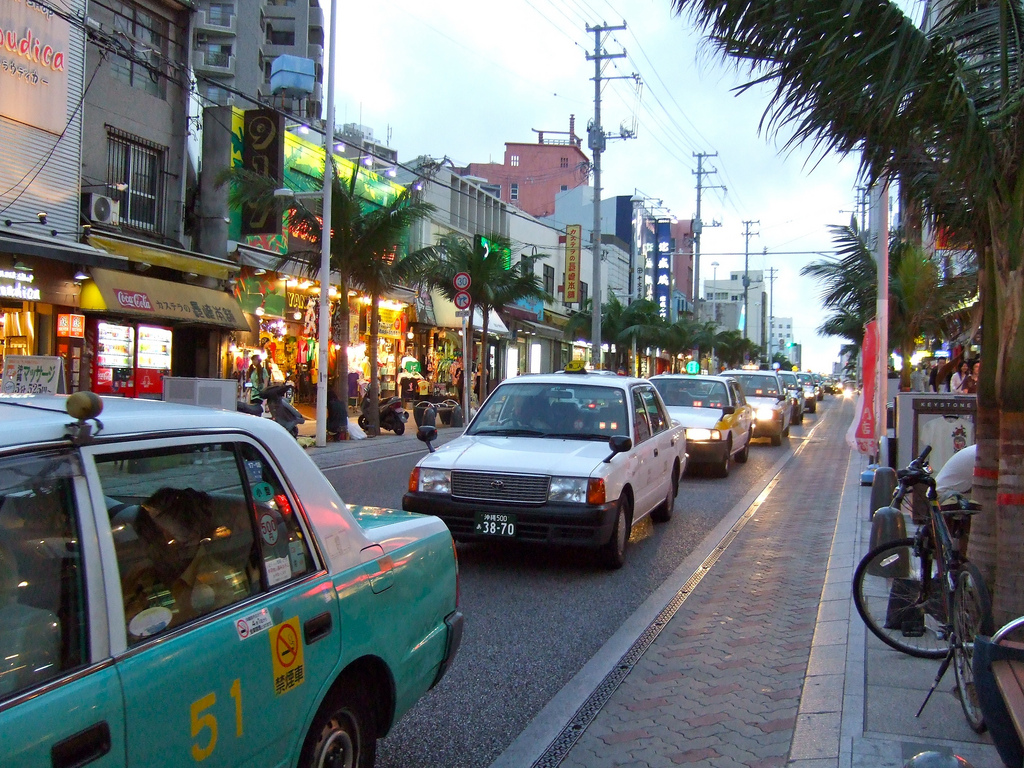
Kokusai-dori
My immediate future involved dinner. So I took the bus back to Kokusai-dori and walked slowly towards my hotel, looking around for a place to eat. Suddenly a sign for Charlie’s Tacos caught my eye, and it sounded delicious. I guess I wanted some familiar, spicy food rather than more subtle Japanese fare. So I followed the narrow staircase up and found a diner-like restaurant with a friendly staff that gestured what I should do. Scattered here and there are also little Okinawan touches such as shisa lions and hibiscus flowers, which gave the restaurant a distinct local feel.
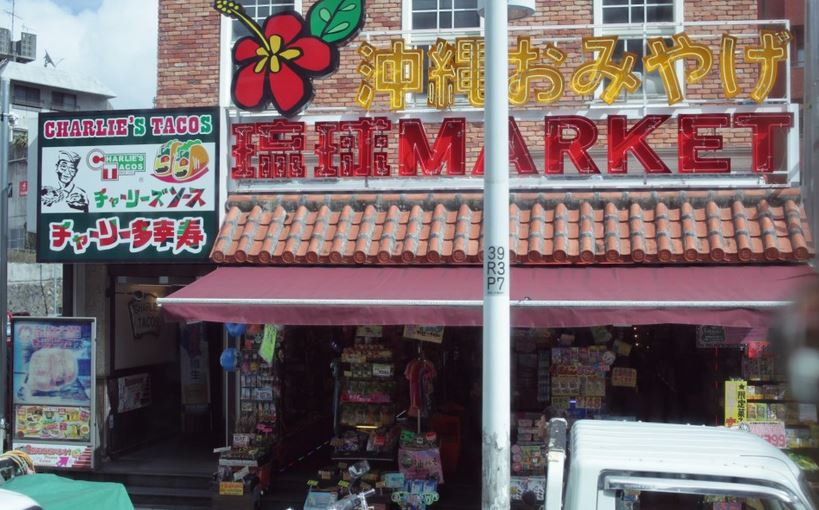
Charlies Taco outside – not easy to find
I ordered at the counter, collected my silverware, and barely had time to wonder what the food would be like when it arrived. There was taco rice, with spicy ground beef served over a bed of rice. And I had a couple of tuna tacos to go with it, which I inhaled, as they were delicious and I was hungry. Still wanting a bit of something, I looked over the menu again and settled on chocolate ice cream.
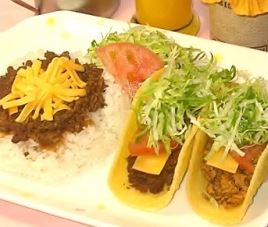
It was nothing like I expected, it was so rich and creamy and intensely chocolate. Being a fan of sweets, I felt like I could order several more and eat them in one sitting.
Instead, I walked back to my hotel, taking in the sights, sounds and smells of Kokusai-dori. After seeing the horrors of war, it was a bit surreal to realize that this bustling area and even the tacos I ate would not have existed here if it were not for WWII and the subsequent occupation. I had seen a lot today, and knew that it would take much longer to assimilate it all.
 photos by:
Kzaral &
aki.sato,
umezy12,
Okinawa Steve,
southtopia
photos by:
Kzaral &
aki.sato,
umezy12,
Okinawa Steve,
southtopia